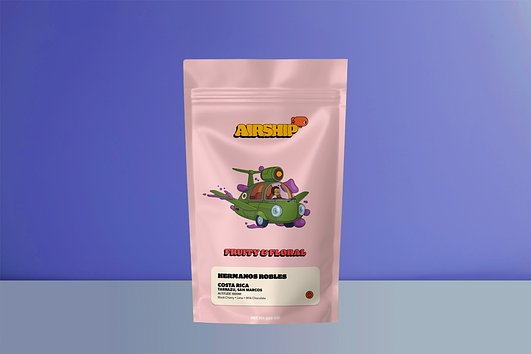I Started Roasting Coffee at Home During the Pandemic—Here's What I Learned
![]() Maryna Gray
• July 08, 2021
Maryna Gray
• July 08, 2021
During the early months of the COVID-19 pandemic, my husband and I leaned heavily into a hobby that we’d done more casually before: we began roasting coffee at home. Using a Behmor 1600+ coffee roaster that could roast up to a pound of coffee at a time, we began spending mornings and afternoons on our back porch to vent the strong coffee-roasting scent while we took notes on how each batch turned out.
Despite loving the fun and variety that home-roasting brings, we still relish every time we get our hands on some beans perfected by a professional roaster. Just like an amateur but passionate tennis player really understands the skill of a pro in a way that a casual observer might not, getting to know the roasting process has opened our eyes to the world of specialty coffee. Here's what we've learned about roasting coffee at home.

1. Roasters Have Two Tools: Heat and Time
The roaster we have has different profiles that you can express on a graph based on how hot the roaster is for how long, and how it varies the heat over time.
You can approach the bean by warming it up slowly, or you can fairly quickly heat to a certain level and vary it strategically from there. As bean distributors learn about how the bean responds to different ways of roasting, they may suggest particular approaches.
One of the things that I’ve learned is that roasting is an art: roasters develop an ear for how the beans crack in specific ways when they are still cooking versus when they're finished and ready to be ground up. But it’s also a science, in the sense that if you take enough notes on how roasts turned out after certain time and heat, you can observe patterns.
After all, that’s how Behmor programmed those original settings to make it a little easier for home roasters; we don’t have to burn as many beans in order to learn the ropes anymore.
That being said, we still fry batches occasionally, and have beans that seem to have been roasting forever and still look way too green. Roasting for yourself really helps you appreciate just how much professionals put in to understanding heat and time before they can consistently roast a great batch.
2. Every Farm of Origin is Different, But So Is Every Bean
If you’ve been trying artisan coffee for a while, you know that there are dozens of countries, multiple processes, and various types of beans that can all impact the way a coffee tastes. Additional complexity arises in that these varieties all change the roasting process, too!
While we have a green bean distributor who can often get us beans from the same farm in Ethiopia or Guatamala consistently, each harvest is also different, affected by different weather and the small differences in soil.
When you drink a cup of artisan-roasted coffee, you’re really having an experience that no one else ever has: this growing season’s bean combined with the roaster’s expertise and the exact temperature of water you used to brew the coffee. It’s all complex and a little different from anyone else’s type!
3. Your Tastes Can Change Over Time
I used to be a medium-dark roast lover. I liked the chocolate-y flavors that come out in darker coffee, and thought there could be nothing better than a cream-and-sugar cup of dark roast.
Well, most of the roasts we’ve been doing this year have been in the light-and-medium roast categories. I recently tried one of those malty dark roasts again and... wow. I’ve completely changed!
Roasting one to three new types of coffee every week has given me a breadth of coffee experience that I am grateful to have, but it also means that my palate is more informed, helping me find what I really like. You don’t have to like the same kind of coffee forever, it turns out!
Related: Light Roast vs. Dark Roast Coffee: What's the Difference?
4. Sampling and Taking Notes Is a Great Way to Find Your Ideal Bean
The way we’ve responded to getting busy again and roasting less is to take our lessons from roasting coffee at home about the kinds of coffee we like and apply them when we’re buying pre-roasted beans. Every time we try a coffee, we take notes on what we liked about the flavor; with professionally roasted coffees, we learn what kinds of notes we want to get in our home roasts. Whenever a home roast falls a little flat, we take notes on what we want to be different and try it again. Similarly, if I’m not wowed by a professional roast, I take notes so that I can continue to both expand and pinpoint my own tastes. It’s a fun journey!
We want to help you make better coffee at home. Our recommendations are our own, and never sponsored. If you see something you love and buy it through our links, we may receive an affiliate commission (thanks for that!).





